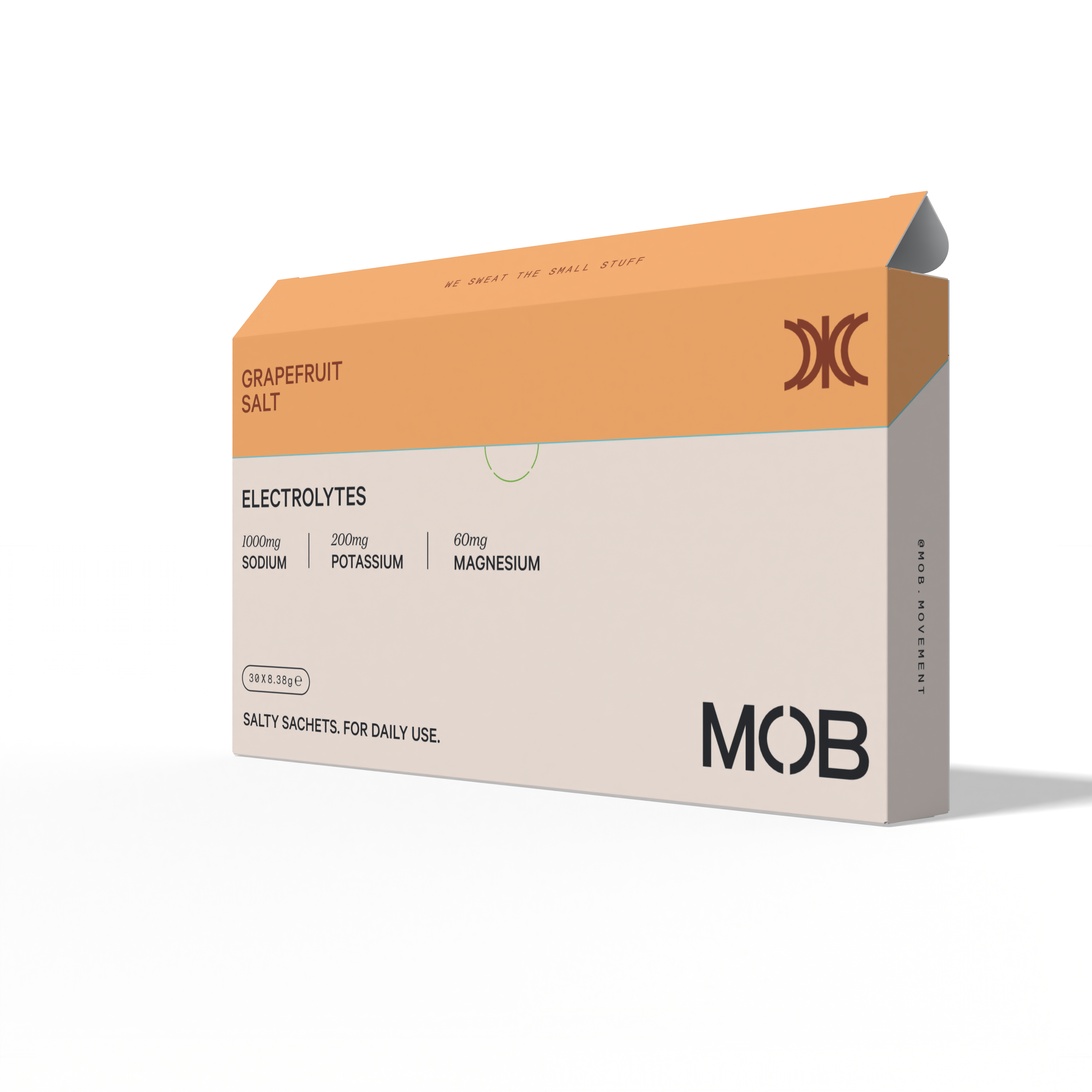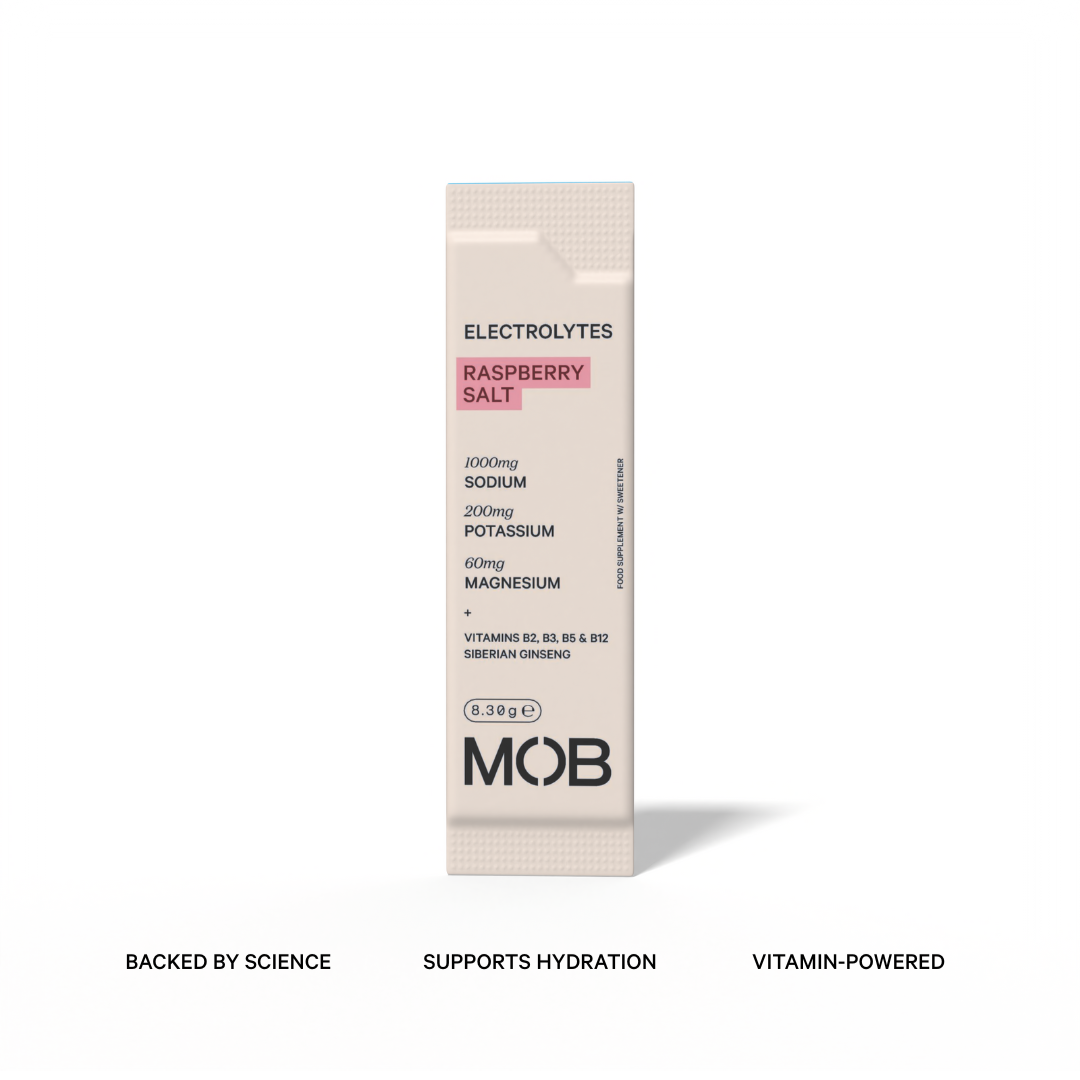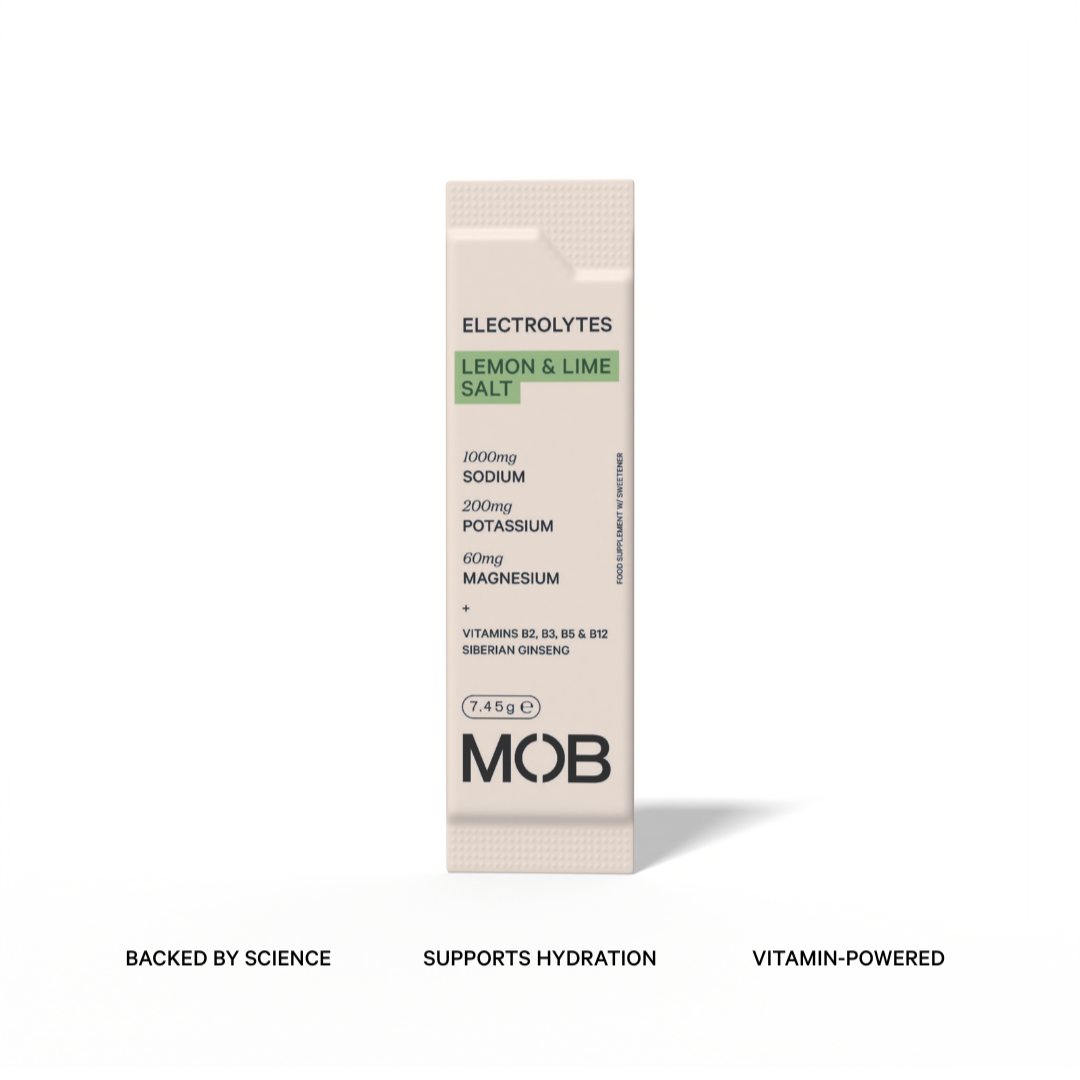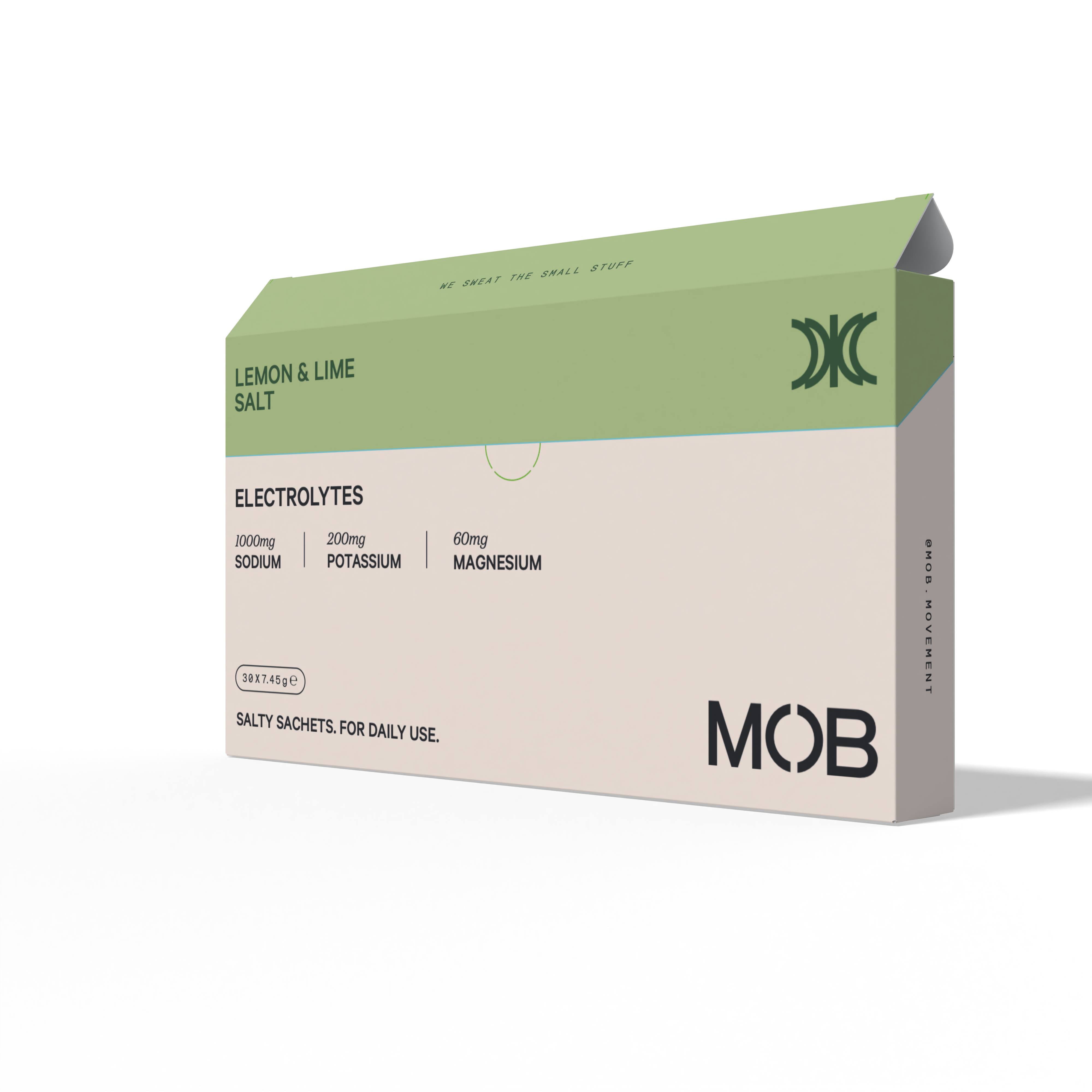Electrolytes are often associated with elite athletes and endurance events. But hydration isn’t just for race day. If you sweat, move, focus hard, or deal with daily stress, your body is using and losing essential minerals—whether you're running marathons or running errands.
MOB Electrolytes are formulated to support the way most of us live: active, varied, and always on the move. In this article, we explore why electrolyte depletion happens during everyday life, how to spot it, and how proper replenishment can help you stay balanced, focused, and energised.
Electrolytes Aren’t Just for Athletes
Electrolytes like sodium, potassium, and magnesium play a vital role in fluid regulation, muscle contraction, and nervous system function (Institute of Medicine 270–72). These minerals work together to support hydration, energy metabolism, and brain-body communication.
We don’t just lose them through intense training. Common daily habits and conditions can drain your electrolyte stores more than you’d expect:
-
Light to moderate sweating
-
Long walks or commuting
-
Hot environments or sauna sessions
-
Caffeine and alcohol consumption
-
Stress or disrupted sleep
-
Mild illness or medication use
You don’t have to be visibly sweating to experience a shift in fluid balance. Subtle losses throughout the day can add up and affect how you feel.
Signs of Electrolyte Imbalance
Low electrolyte levels often show up as symptoms we brush off or misattribute. You might feel:
-
Fatigued despite drinking lots of water
-
Lightheaded or foggy in the afternoon
-
Prone to muscle cramps or tightness
-
Sluggish after a warm commute or workout
-
More irritable or distracted under pressure
These symptoms aren’t always due to dehydration alone. In many cases, water without mineral replacement can dilute sodium levels further, especially after sweating, leading to a condition called hyponatremia (Maughan et al. 590). While it’s more common in athletes, it can also happen during extended heat exposure or excessive water intake.
You Sweat Minerals, Not Just Water
Every drop of sweat contains sodium, potassium, and magnesium. And while sweat rates vary, even light activity or environmental heat can result in meaningful losses. Sodium losses, for example, can range from 220 to over 2,000 mg per litre of sweat depending on the individual and the intensity of movement (Baker).
Magnesium is particularly important in day-to-day energy production, nervous system regulation, and recovery. It’s often under-consumed, yet critical for neuromuscular control and fatigue resistance (Lukaski 305–07). Potassium, too, plays a major role in maintaining fluid balance inside cells and supporting cardiovascular health (Sawka et al. 379).
Conclusion
Electrolyte loss isn’t exclusive to athletes or endurance events. Everyday factors like heat, stress, light activity, and hydration habits can all contribute to imbalances that affect how you feel and function.
Research shows that replenishing sodium, potassium, and magnesium helps restore fluid balance, support physical performance, and reduce the risk of cramping or fatigue (Institute of Medicine 270–72; Lukaski 305–07). Supplementing with electrolytes can be beneficial for anyone looking to stay sharp, energised, and better hydrated—regardless of whether they’re heading into a workout or a long day at work.
MOB Electrolyte sachets provide a convenient, effective way to support hydration and recovery throughout daily life. For a balanced introduction to our formulations, explore our full range or try the variety pack.
Works Cited
Baker, L. B. “Sweat Sodium Concentration and Sodium Loss in Athletes.” Gatorade Sports Science Institute, 2017. https://www.gssiweb.org/sports-science-exchange/article/sse-161-sweat-testing-methodology-in-the-field-challenges-and-best-practices.
Institute of Medicine. Dietary Reference Intakes for Water, Potassium, Sodium, Chloride, and Sulfate. National Academies Press, 2005.
Lukaski, Henry C. “Magnesium, Zinc, and Chromium Nutrition and Athletic Performance.” Sports Medicine, vol. 10, no. 5, 1990, pp. 303–10. https://doi.org/10.2165/00007256-199010050-00002.
Maughan, R. J., Shirreffs, S. M., and Leiper, J. B. “Errors in the Estimation of Hydration Status from Changes in Body Mass.” British Journal of Sports Medicine, vol. 41, no. 8, 2007, pp. 590–91. https://bjsm.bmj.com/content/41/8/590.
Sawka, Michael N., et al. “Exercise and Fluid Replacement.” Medicine & Science in Sports & Exercise, vol. 39, no. 2, 2007, pp. 377–90. https://doi.org/10.1249/mss.0b013e31802ca597.








